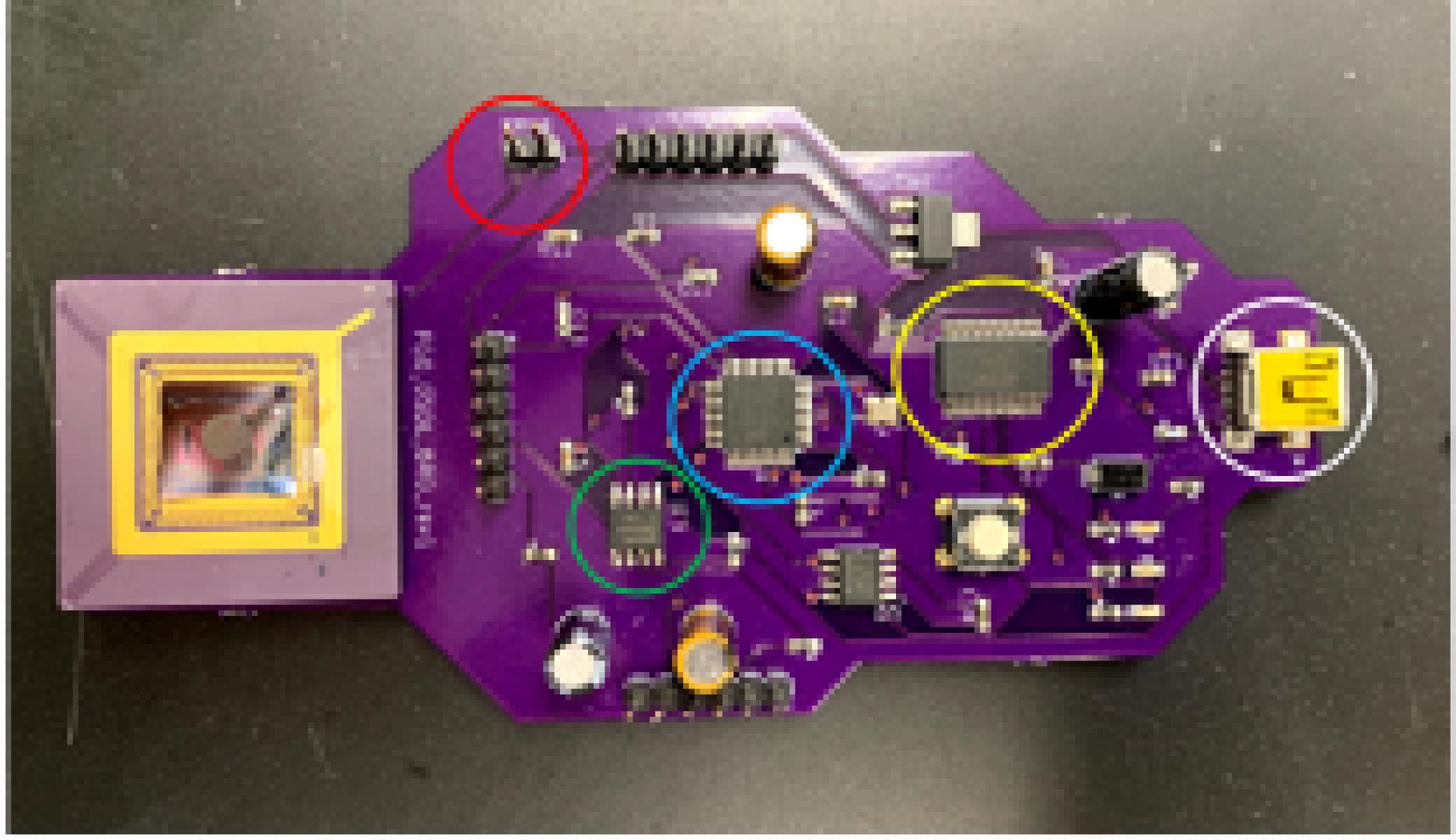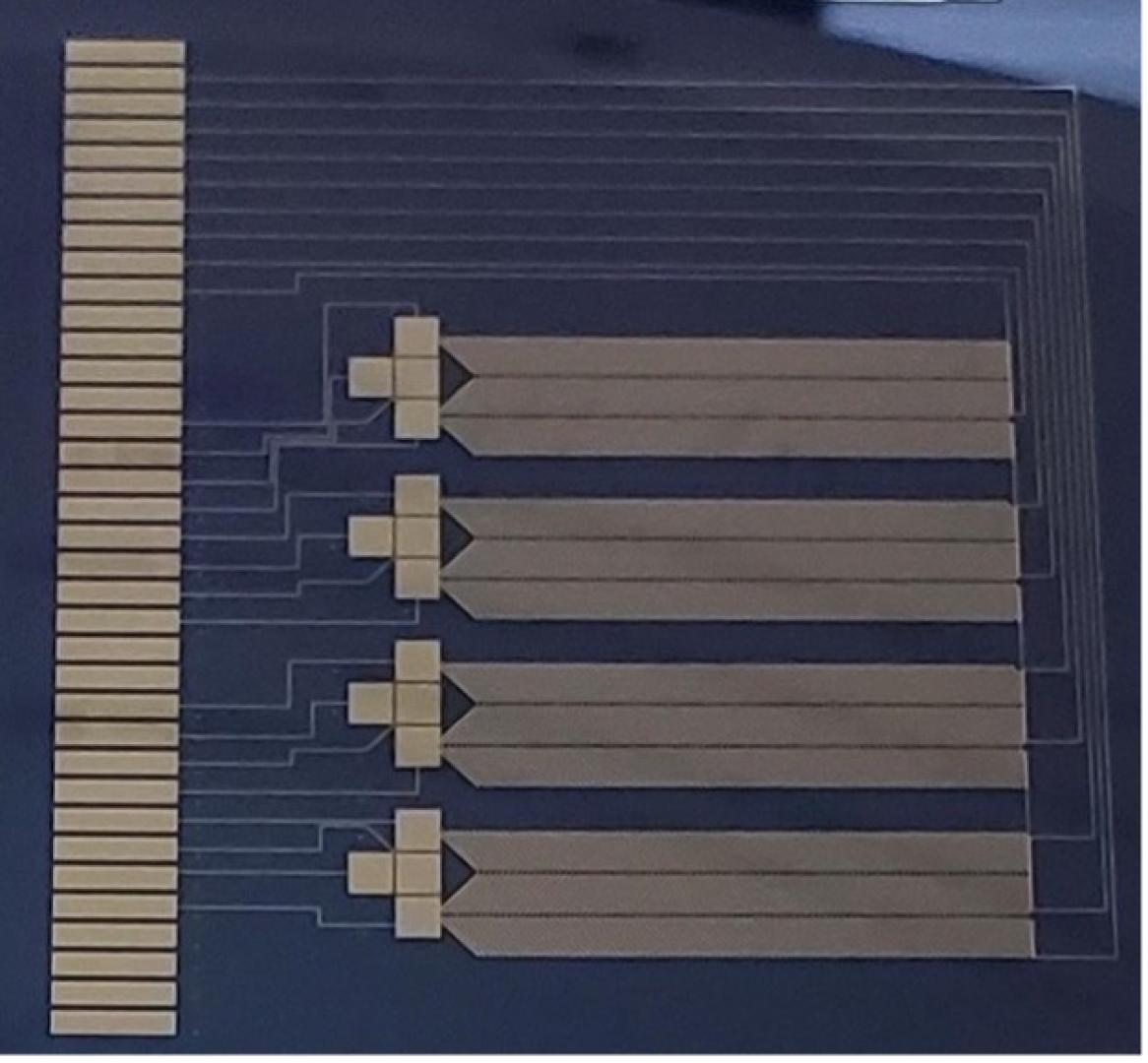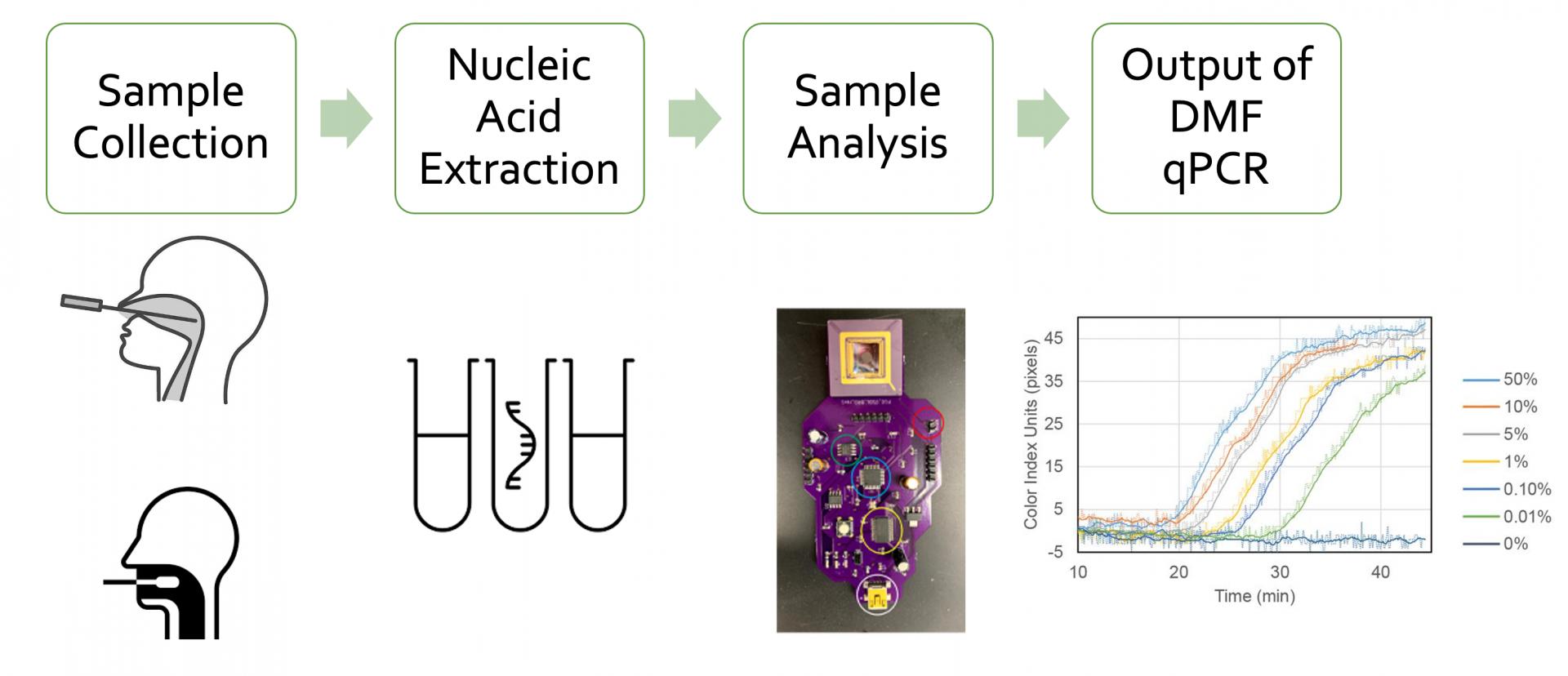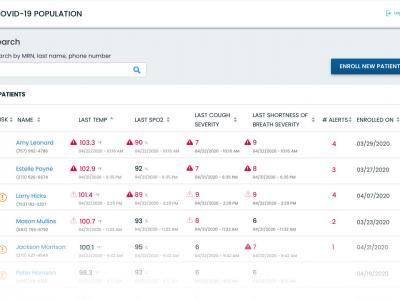Contact
Provider(s):
This LAMP-based portable (smartphone-sized) quantitative real-time PCR (qPCR) has been developed specifically to rapidly detect the presence of Influenza A (H1N1) in samples. It employs the technology of droplet microfluidics (DMF) and can be connected to a PC or laptop via a USB port.
- Outbreaks of Influenza of variable extent and severity occur nearly every year, resulting in significant morbidity rates in the general population and in increased mortality rates among high- patients. Apart from the annual seasonal epidemics, influenza presents sporadic and unpredictable global pandemic outbreaks as well. Pandemic influenza occurs every 10–50 years and is characterised by the introduction of a new influenza A virus strain that is antigenically very different from previously circulating strains; the lack of pre-existing immunity leads to increased mortality.
Novel biomarkers targeting specifically the aforementioned virus strain were developed in STAMINA project, and incorporated into a validated protocol which includes sample preparation and analysis. The qPCR DMF device is capable to detect the presence of Influenza A (H1N1) with robustness and accuracy, while due to the nature of microfluidics technology, it reduces the sample-to-result time.
A graphical representation of the implementation process is depicted in the illustrations.
Supported Use Cases
Rapid on-site detection of Influenza A (H1N1)
 |
Portfolio of Solutions web site has been initially developed in the scope of DRIVER+ project. Today, the service is managed by AIT Austrian Institute of Technology GmbH., for the benefit of the European Management. PoS is endorsed and supported by the Disaster Competence Network Austria (DCNA) as well as by the STAMINA and TeamAware H2020 projects. |



